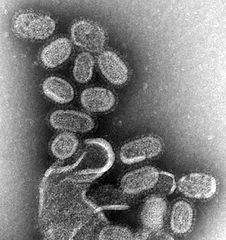Many of you have recently read that a research team at the University of Illinois led by Min-Feng Yu has developed a process to grow nanowires of unlimited length. The same process also allows for the construction of complex, three-dimensional nanoscale structures. If this is news to you, please refer to the links below.
It’s easy to let this news item slip past before its implications have a chance to sink in.
Professor Yu and his team have shown us a glimpse of how to make nanowire based materials that will, once the technology is developed more fully, allow for at least two very significant enhancements in materials science.
1. Nanowires that will be as long as we want them to be. The only limitations that seem to be indicated are the size of the “ink” reservoir and the size of spool that the nanowires are wound on. Scale up the ink supply and the scale up size of the spool and we’ll soon be making cables and fabric. Make the cables long enough and braid enough of them them together and the Space Elevator Games may become even more exciting to watch.
2. It should also lend itself very nicely to 3D printing of complex nanoscale structures. Actually building components that will allow for the bootstrapping of a desktop sized molecular manufacturing fab seems like it’s a lot closer than it was just a short time ago.
All of this highlights the need to more richly fund the Lifeboat Foundation in general and the Lifeboat Foundation’s NanoShield program in particular so that truly transformative technologies like these can be brought to market in a way that minimizes the risks of their powers being used for ill.
If you can, please consider donating to the Lifeboat Foundation. Every dollar helps us to safely bring a better world into being. The species you help save may be your own.
References:
http://www.news.uiuc.edu/news/08/0130nanofiber.html
http://www.sciencedaily.com/releases/2008/01/080130101732.htm
http://www3.interscience.wiley.com/cgi-bin/fulltext/117901964/PDFSTART
 What would make this new vaccine different from the ones already available is that it would target M2e, a conserved region of influenza “A” strains. Since that part doesn’t constantly mutate and about 2/3 of seasonal epidemics and all pandemics are due to type “A” strains, it could be a very efficient weapon against repeats of the “Spanish Flu” (1918−1919) that killed at least 50 million people worldwide. Only the future will tell if phase II and III trials are successful.
What would make this new vaccine different from the ones already available is that it would target M2e, a conserved region of influenza “A” strains. Since that part doesn’t constantly mutate and about 2/3 of seasonal epidemics and all pandemics are due to type “A” strains, it could be a very efficient weapon against repeats of the “Spanish Flu” (1918−1919) that killed at least 50 million people worldwide. Only the future will tell if phase II and III trials are successful.